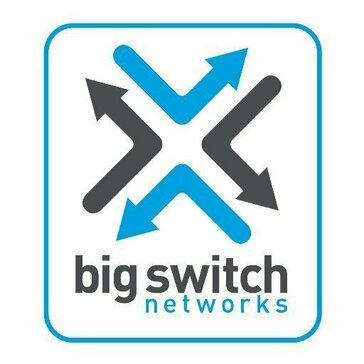Description

Google Kubernetes Engine (GKE)

Project Calico
Comprehensive Overview: Google Kubernetes Engine (GKE) vs Project Calico
Google Kubernetes Engine (GKE) and Project Calico are both integral components in the container orchestration and networking landscape. They serve unique purposes, target different markets, and have distinctive features that appeal to diverse user bases.
Google Kubernetes Engine (GKE)
a) Primary Functions and Target Markets
-
Primary Functions:
- GKE is a managed Kubernetes service provided by Google Cloud that simplifies the deployment, management, and scaling of containerized applications using Kubernetes clusters. It automates various tasks such as provisioning, upgrading, and scaling of clusters.
- GKE offers robust security features, integrated logging and monitoring, and support for hybrid and multi-cloud environments.
- It provides advanced features like Anthos for hybrid deployment and integration with other Google services for a seamless cloud-native application environment.
-
Target Markets:
- Enterprises and organizations of all sizes that are looking to adopt Kubernetes for container orchestration with minimal operational overhead.
- Businesses aiming for a sophisticated, cloud-native approach while utilizing other Google Cloud Platform services.
- Companies seeking a managed, scalable solution for running production workloads, particularly those requiring high availability and advanced security.
b) Market Share and User Base
- Market Share:
- GKE is one of the leading managed Kubernetes platforms globally. It is widely adopted by enterprises using Google Cloud Platform due to its deep integration and comprehensive feature set.
- User Base:
- It includes a wide range of businesses from startups to large enterprises, especially those already engaged in the Google ecosystem.
- Its user base benefits from Google's global infrastructure, reliability, and high availability features.
Project Calico
a) Primary Functions and Target Markets
-
Primary Functions:
- Project Calico is an open-source networking and network security solution for containers, virtual machines, and native host-based workloads. It provides scalable, high-performance networking and network policy enforcement.
- It focuses on delivering secure network policy enforcement and is known for its simplicity, flexibility, and performance, supporting various data planes (Kubernetes, OpenStack, etc.).
-
Target Markets:
- Organizations running Kubernetes clusters who need robust network policy enforcement and networking solutions.
- Enterprises looking for open-source alternatives for securing containerized applications and ensuring compliance with various network security standards.
- Orchestrators that require flexible and scalable networking solutions across multiple hybrid environments.
b) Market Share and User Base
- Market Share:
- Project Calico is a popular choice among companies looking for open-source solutions for networking and security in Kubernetes environments. It has a strong presence in Kubernetes landscapes but competes with other CNI (Container Network Interface) solutions like Flannel and Weave.
- User Base:
- Its adoption spans across diverse industries, including technology firms, financial services, and telecommunications. It attracts users who prioritize open-source solutions with extensive community support.
c) Key Differentiating Factors
-
Managed Service vs. Open Source:
- GKE is a fully managed service by Google Cloud, which simplifies many aspects of Kubernetes management, whereas Project Calico is an open-source project primarily focused on networking and security.
-
Integration and Ecosystem:
- GKE offers deep integration with Google Cloud services, providing a comprehensive ecosystem for cloud-native development. In contrast, Calico integrates with various cloud platforms but focuses on networking solutions.
-
Network Policy and Security:
- Project Calico's forte is its robust network policy capabilities, granting precise control over the network interactions among workloads. GKE relies on Kubernetes' network policies but can also leverage Calico for enhanced security features.
-
User Strategy and Focus:
- GKE users may prioritize ease of use and integration within Google Cloud's ecosystem, benefiting from its managed nature and advanced services. Calico appeals to users seeking flexibility, performance, and detailed network control in Kubernetes environments on any cloud platform.
Each tool has strengths tailored to different user needs, from GKE’s full-featured, managed environments to Calico’s open-source adaptability and strong security features.
Contact Info

Year founded :
Not Available
Not Available
Not Available
Not Available
Not Available

Year founded :
2016
Not Available
Not Available
United States
http://www.linkedin.com/company/project-calico
Feature Similarity Breakdown: Google Kubernetes Engine (GKE), Project Calico
Google Kubernetes Engine (GKE) and Project Calico are both tools used in the Kubernetes ecosystem, but they serve different roles and purposes. GKE is a managed Kubernetes service provided by Google Cloud, while Project Calico is a technology for network policy enforcement and network management in Kubernetes clusters. Here’s a breakdown of the similarities and differences:
a) Core Features in Common
-
Kubernetes Compatibility:
- Both GKE and Project Calico are designed to work within the Kubernetes ecosystem, providing solutions that enhance Kubernetes deployments.
-
Scalability:
- Both facilitate scaling of applications: GKE does this by managing the underlying infrastructure, while Calico provides scalable networking and security policies.
-
Network Policy Management:
- GKE integrates network policy definitions that can be enforced using Calico, which is often used to implement Kubernetes network policies.
-
Security:
- Emphasis on providing secure environments for running containers. GKE offers strong identity and access management, while Calico provides detailed network security policies.
-
Multi-cloud and Hybrid Cloud Support:
- Both solutions are adaptable to multi-cloud and hybrid cloud environments; GKE can be run on Google Cloud with integration capabilities for hybrid environments, and Calico can work across various cloud platforms and on-premises deployments.
b) User Interface Comparison
-
GKE User Interface:
- GKE has a comprehensive user interface integrated into the Google Cloud Console, providing a variety of tools and dashboards for managing clusters, deploying applications, monitoring statistics, and configuring network policies.
- The UI is user-friendly and designed for administrators to manage resources easily with visual overviews and straightforward navigation.
-
Project Calico User Interface:
- Traditionally, Project Calico does not come with a built-in graphical user interface. Interactions typically happen through command-line tools or its API.
- Users may interact with Calico’s policies through Kubernetes manifest files or third-party UIs that integrate with Kubernetes.
c) Unique Features
-
Unique Features of Google Kubernetes Engine (GKE):
- Autopilot Mode: GKE offers an Autopilot mode, which fully manages the Kubernetes control plane and node infrastructure, allowing developers to focus solely on their applications.
- Integrated with Google Cloud Services: Deep integration with other Google Cloud services provides advantages in using Google's AI, machine learning capabilities, and data services.
- Automatic Upgrades and Patch Management: GKE provides automated node upgrades and security patching for cluster nodes.
-
Unique Features of Project Calico:
- Network Security and Policy Flexibility: Calico allows for advanced security policies beyond what basic Kubernetes network policies provide, including layer 3 and 4 rules.
- IP Address Management: Calico offers robust IPAM capabilities that simplify management of IP addresses in diverse deployment environments.
- Cross-Platform Networking: Calico can work with various data planes, including Linux, eBPF, and Windows, offering flexibility for complex networking environments.
Ultimately, while there is some overlap in network policy management, GKE provides a broader managed Kubernetes service, whereas Project Calico focuses on specialized networking and security capabilities within the Kubernetes ecosystem.
Features

Not Available

Not Available
Best Fit Use Cases: Google Kubernetes Engine (GKE), Project Calico
Google Kubernetes Engine (GKE)
a) Best Use Cases for GKE:
-
Cloud-native Applications:
- GKE is ideal for businesses building cloud-native applications that need to leverage containerization and microservices architecture.
- Offers seamless integration with other Google Cloud services like BigQuery, Cloud Storage, etc.
-
Scalable Applications:
- Ideal for organizations needing to quickly scale applications up or down based on demand, such as e-commerce platforms or social media applications during peak loads.
-
DevOps and CI/CD:
- Teams focused on DevOps can benefit significantly from GKE’s automated rollouts and rollbacks, helping streamline CI/CD pipelines.
-
Hybrid Cloud Strategies:
- Businesses pursuing hybrid cloud strategies can benefit from Anthos, which extends GKE capabilities across on-premises and multi-cloud environments.
-
Machine Learning/Data Processing:
- Companies running data processing pipelines or machine learning workloads, taking advantage of GPU and TPU support in GKE.
d) Catered Industry Verticals and Company Sizes for GKE:
- Technology and Startups:
- Startups with innovative tech solutions can leverage GKE for quick deployment and scaling.
- Enterprise-grade Solutions:
- Large enterprises needing robust, secure, and scalable infrastructure to support complex applications and services.
- Healthcare and Financial Services:
- Industries requiring high levels of compliance and security, where GKE’s integrations with Google Cloud’s security features are beneficial.
Project Calico
b) Preferred Use Cases for Project Calico:
-
Network Security:
- Ideal for scenarios where fine-grained network security is critical. Allows creation of detailed network policies for pod communication, making it suitable for security-sensitive environments.
-
Multi-cluster Networking:
- Useful for businesses running multi-cluster Kubernetes environments, needing consistent networking policies across clusters.
-
High-performance Networking:
- Scenarios where high-performance, low-latency networking is required. Calico's use of eBPF and IP routing can offer performance advantages.
-
Flexible Networking Needs:
- Environments needing flexibility in choosing between different networking modes, such as overlay or non-overlay.
d) Catered Industry Verticals and Company Sizes for Project Calico:
- Telecommunications:
- Calico is well-suited for telecom companies that require high-performance networking and detailed policy controls.
- Financial Services:
- Businesses requiring stringent access controls and compliance can benefit from Calico’s security-centric approach.
- Any Size of Businesses:
- From small startups needing basic networking to large enterprises with complex policy requirements, Calico can scale accordingly.
Overall, GKE and Project Calico serve complementary rather than competing purposes, making them both relevant across various sectors and business sizes. They cater to the needs of organizations aiming to harness the potential of Kubernetes with a focus on scalability and security, respectively.
Pricing

Pricing Not Available

Pricing Not Available
Metrics History
Metrics History
Comparing teamSize across companies
Conclusion & Final Verdict: Google Kubernetes Engine (GKE) vs Project Calico
When evaluating Google Kubernetes Engine (GKE) and Project Calico, it's essential to clarify that these two products serve different purposes. GKE is a managed Kubernetes service offered by Google Cloud, whereas Project Calico is a networking and network security solution for containers that can be used in various Kubernetes environments, including GKE. This distinction is crucial for understanding how they can complement each other rather than be directly compared as standalone, competitive options.
a) Best Overall Value:
Given their different roles, directly comparing their overall value isn't entirely fair. However, in terms of holistic value for deploying, managing, and scaling Kubernetes clusters with built-in support and managed infrastructure, Google Kubernetes Engine (GKE) offers the best value. It provides ease of use, scalability, and integration with other Google Cloud services, making it suitable for organizations that want to focus more on application development and less on underlying infrastructure management.
b) Pros and Cons:
Google Kubernetes Engine (GKE):
Pros:
- Managed Service: GKE handles the control plane, simplifying cluster management.
- Scalability and Flexibility: Easily scale applications and leverage autoscaling features.
- Integration: Seamless integration with other Google Cloud services and tools.
- Security: Offers robust security features, including identity and access management (IAM) and automatic upgrades/patching.
- User-Friendly: Great documentation and support, making it accessible even to teams new to Kubernetes.
Cons:
- Cost: Can be more expensive than self-managed Kubernetes solutions due to premium managed services.
- Vendor Lock-In: Potential dependency on Google Cloud services.
- Complexity at Scale: As clusters grow, configurations and management can become complex.
Project Calico:
Pros:
- Network Policy: Provides powerful network policy management capabilities for Kubernetes clusters.
- Flexibility: Can be used with various cloud providers and on-premise infrastructures.
- Performance: Offers high-performance networking, especially for large-scale deployments.
- Open Source: Being open-source allows for customizable and community-driven enhancements.
Cons:
- Deployment Complexity: Requires Kubernetes expertise for installation and management.
- Not a Complete Solution: Needs to be paired with a Kubernetes platform (like GKE) to be functional.
- Learning Curve: Advanced features may be complex for users not well-versed in Kubernetes networking.
c) Recommendations:
For Users Deciding Between GKE and Project Calico:
-
If your primary goal is to have a robust, scalable, and fully managed Kubernetes environment, choose GKE. It provides a comprehensive set of features and a user-friendly interface with integrated Google Cloud services, ideal for companies focusing on rapid development and deployment without managing the control plane.
-
If you require detailed network policy management and are dealing with complex network scenarios across hybrid or multi-cloud environments, then incorporating Project Calico within your Kubernetes strategy, possibly alongside GKE, would be advantageous.
-
For those who need both managed Kubernetes services and sophisticated networking capabilities, consider using both GKE and Project Calico together. GKE can manage your cluster lifecycle, while Calico provides enhanced networking and security policies.
Ultimately, organizations need to evaluate their specific needs, expertise level, and existing infrastructure to choose the best combination or product.
Add to compare
Add similar companies



